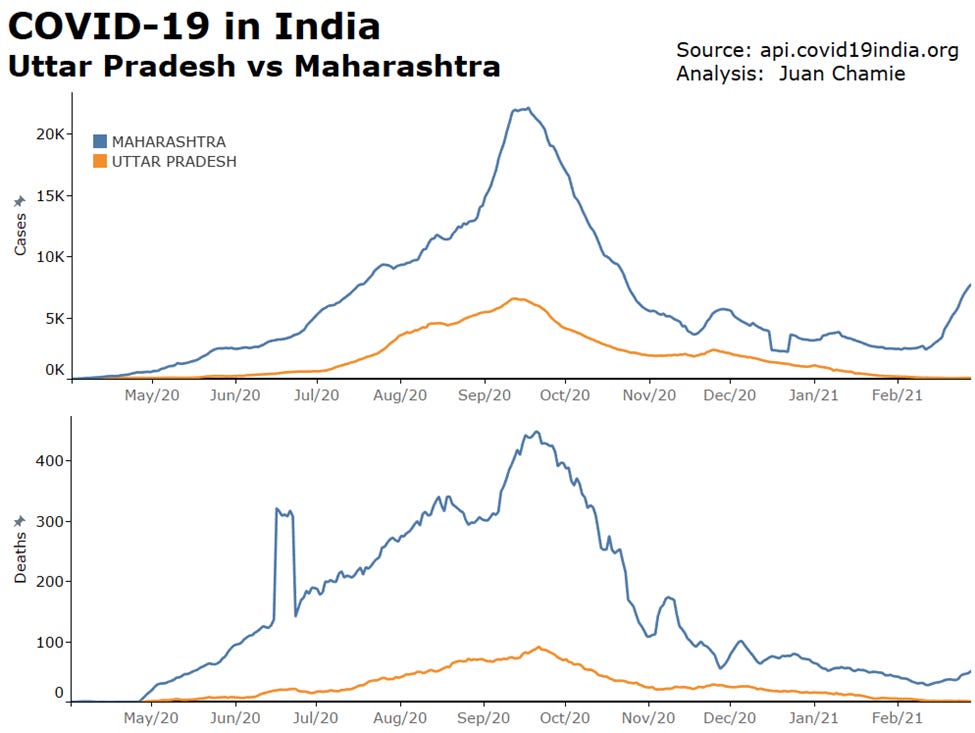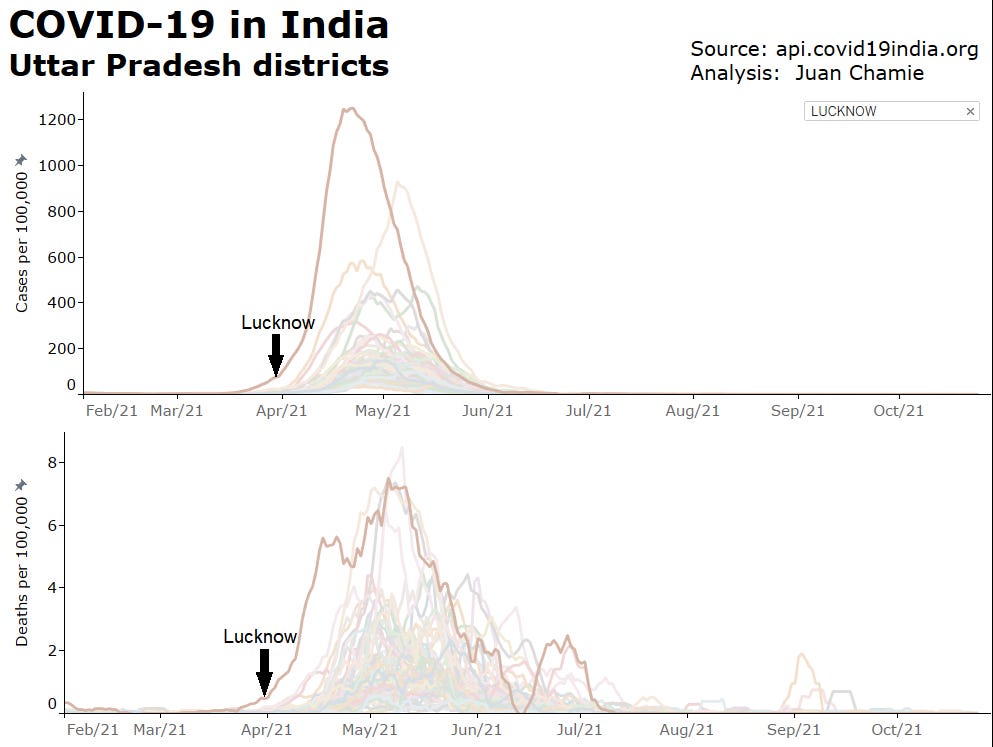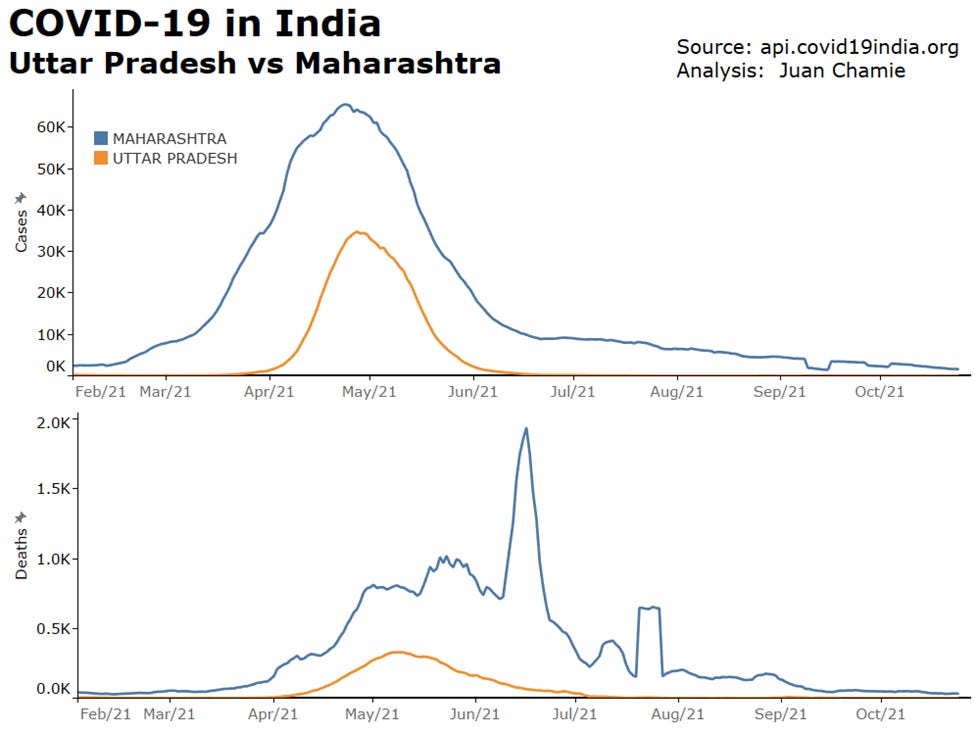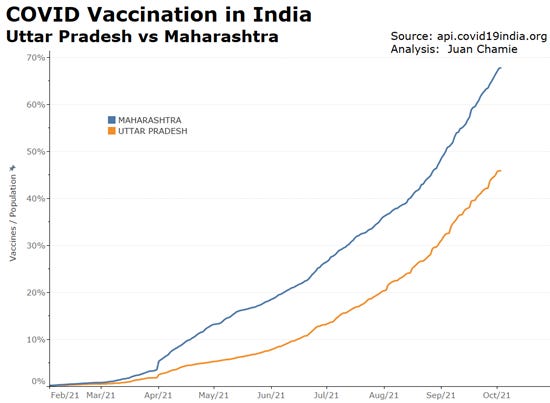Ivermectin in Uttar Pradesh.
Fact: The total number of COVID fatalities in the United States in the last 4 months is 500 times higher than the fatalities in Uttar Pradesh in the same period.
Ivermectin in the first wave.
Back in May 2020, the first COVID outbreak in Uttar Pradesh started in the most touristic location: the Taj Mahal district, the district of Agra.
Agra health team evaluated ivermectin as COVID prophylaxis and treatment. The district included ivermectin to treat Covid right after the team confirmed positive results. The early introduction of ivermectin and the strong contact tracing strategy led to very positive results. The fast improvement drew the attention to the state authorities.
On August 5, 2020, Uttar Pradesh Chief Minister announced a shift in the covid protocol. They placed ivermectin as treatment and as prophylaxis. The success of “Agra model” was the primary driver to change the protocol.
Uttar Pradesh strategy in August 2,020 included over 70,000 health care workers reaching out to high-risk contacts of COVID-19 positive cases and treat them. The coverage was close to 90%. The strategy shared by the State Surveillance Officer and published by the World Health Organization.
The strategy in Uttar Pradesh during the first wave was successful. It was much better than the second largest state (Maharashtra). Cases and deaths in Uttar Pradesh were a fraction of Maharashtra’s. Lack of testing wasn’t the explanation as positivity ratio in Maharashtra remained over 20% from May through September 2020. Uttar Pradesh positivity ratio was only higher than 5% during less than a week.
Ivermectin in the Delta wave.
The second Covid wave burst quickly. It originated in a mass influx of Covid infected people from Delhi and Mumbai. The first district hit was the capital, Lucknow. Cases grew fast, reaching six times the peak values in the first wave.
The stronger COVID response began on 5 May 2021. A report from the WHO confirmed the strategy: Government teams moved across 97,941 villages in 75 districts. The state government deployed 141,610 teams and 21,242 supervisors to ensure total rural area coverage.
During Delta wave, Uttar Pradesh embarrassed Maharashtra. The outbreak in Uttar Pradesh had a smaller peak and it was shorter too. Positivity ratio in Maharashtra stayed over 5% four months, and Uttar Pradesh only one month.
Possible confounding factors.
Vaccination.
The drop in cases happened after the first 13 million vaccine doses. That’s 5% of the population with one dose. This ruled vaccination out.
Lockdown.
Google public data shows a decline in mobility. The mobility decreased more in Maharashtra than in Uttar Pradesh. UP goal was to keep the economy as much open as possible. This ruled lockdown out.
Herd immunity.
Sero-survey conducted at the end of June 2021 showed antibodies in 71% of Uttar Pradesh population. It’s reasonable to assume that the infection rate followed the same case distribution. The sharp drop in cases began when the prevalence was near 50%. This ruled herd immunity out.












The going-the-last-mile article shows that the WHO not only observed the success of ivermectin but they helped with the distribution:
https://www.who.int/india/news/feature-stories/detail/uttar-pradesh-going-the-last-mile-to-stop-covid-19
The WHO article doesn't mention ivermectin, they just say "medicine kit" instead. Each medicine kit contains: Ivermectin 12 mg x 10, vitamin D, vitamin C, multivitamin, zinc, Tylenol, doxycycline 100 mg x 10.
Great article! This slams the door on the naysayers arguments.. also this article shows Uttar Pradesh had HIGHER testing than any other state, blowing out the argument that it was "underreported" https://www.news18.com/news/india/uttar-pradesh-sets-new-record-becomes-first-state-to-cross-7-5-crore-covid-tests-4199399.html
Somehow people claim a state that had HIGHER reporting/testing is underreporting in relation to a neighboring state with the same demographics, similar resources etc.